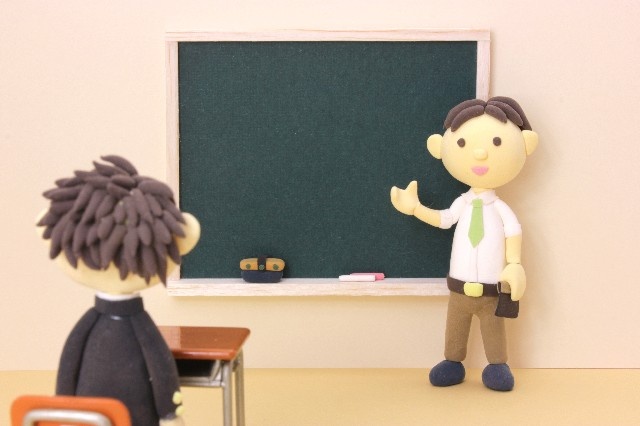Teaching in a Japanese High School: The Basics
Japan has a huge job market for English teaching. In a world that continues to globalize, jobs and opportunities to teach the youth of Japan are in steady supply. We’ve got a brief introduction into what it’s like teaching senior high school students, so grab your pen and notebook and get ready to take notes!
A Glimpse of Your Average High School

https://s3-ap-northeast-1.amazonaws.com/img.photo-ac/ee/ee8e4ef47aa271ccd1e6a2a0f842f514_w.jpg
Secondary education in Japan is divided into junior high (chu-gakko) and senior high (koto-gakko, abbreviated to ko-ko), the later of which encompasses 16- to 18-year-olds in grades 10 through 12. Along with general education high schools, there are vocational and technical-based schools for students bound for a skilled trade, such as accounting or automotive engineering.
School typically begins at 8:30 a.m., when teachers gather for a short staff meeting, and then have a homeroom meeting. Students remain in their homeroom throughout most of the day, leaving only for specialized classes such as art, home economics, or science labs. Classes are conducted in rotating block schedules throughout the week, with most students taking 10 to 14 classes per semester.
Instruction time runs for 50 minutes, with four classes before lunch and two after, followed by another homeroom meeting and o-soji after school. O-soji is a 10- to 15-minute cleaning session carried out by the students, who are assigned in groups to tidy up different areas of the building. No janitors here!
After school, students go to their club activities. Every student, in theory, joins a club to help them develop socially. Clubs range from sports to music, technology and cultural clubs (like tea ceremony, calligraphy or English club). Sports clubs tend to require hours of dedication, while others might meet only once a week for an hour or so.
General Responsibilities

https://s3-ap-northeast-1.amazonaws.com/img.photo-ac/9e/9e2874468fa1428c5fe05b1632bf7874_w.jpg
The phrase "ESID" (every situation is different) floats around the English-teaching circle a lot in Japan. No two people have exactly the same experience when it comes to teaching, but here are some things you can reasonably expect to do at a Japanese high school:
● Classroom instruction—either with a Japanese teacher who leads the class while you supplement, or with a Japanese teacher there for backup while you lead the class.
● Lesson planning and curriculum development (with various levels of involvement depending on school and contract type).
● Worksheet and test writing.
● Grading of term exams, speaking assessments and listening tests.
Other duties you may be asked to participate in include speech contest coaching, running an international club or English club after school, Eiken or TOEFL practice, or helping plan a classroom's or club's culture festival activities.
Additionally, because many universities feature an English-language interview in addition to the application test, third-year students will need help honing their speaking and interview skills during the fall semester. This is a great chance to really make a difference in the lives of your graduating seniors and help them get into their top-choice school!
The Good, The Bad & The Ugly

https://s3-ap-northeast-1.amazonaws.com/img.photo-ac/bc/bcd2f39bbbf871085fb32f613f87e8df_w.jpg
I worked at three very different high schools in Japan: a high-level school with a dedicated international course, an average-scoring commercial high school focused on accounting, and a low-level, will-they-or-won’t-they-graduate school. Keeping the curricula organized was challenging, but the experience was eye-opening in several ways.
Teaching in high school meant I was closer in age to the students and able to be a mentor. The material was more varied and interesting than in elementary or junior high: I taught classes that focused on basic conversation, essay writing, media consumption and cultural practices from around the globe. Also, teenagers are generally open-minded and curious about the world, so they’re the perfect age to be inspired by their experiences with a foreign-born native English speaker.
Conversely, since they're pressured to decide on a career path quite early, students in their third and final year prioritize studying for their college entrance exams over most things, including a language they might not feel passionate about or feel they won't have a use for in the future.
The worst part about teaching high school was that many students arrived to their first class utterly devoid of interest in learning—let alone speaking—English. Rote grammar memorization during their junior high school years had, in their minds, reduced English to a static subject that was to be regurgitated and then forgotten, like math formulas or historical dates. Reshaping opinions toward English learning can feel impossible. However, sometimes you can draw students in with a lot of patience and coaxing.
Tips & Advice

https://s3-ap-northeast-1.amazonaws.com/img.photo-ac/01/01c610890166ff940a9733d07aeb9f05_w.jpg
Like any new job, anticipate a learning curve. Your students will probably be expecting lecture-style teaching if they’ve never had a native English teacher before (there are a few who still haven't!), or they may still be holding a torch for their last ALT (Assistant Language Teacher—that's you!).
Try to make your lessons engaging. The more interactive the lesson, the more your objective will stick, and the more your students will come to view time with you as enjoyable (after all, they're teenagers who like to chat with their friends any chance they get!).
If you're stuck on how to approach teaching a grammar point or concept, ask other ALTs in your area, or consider joining a professional development group such as JALT to pick up lesson plan concepts. Of course, don’t forget that the internet has a wealth of worksheets, games and ideas to inspire you!




